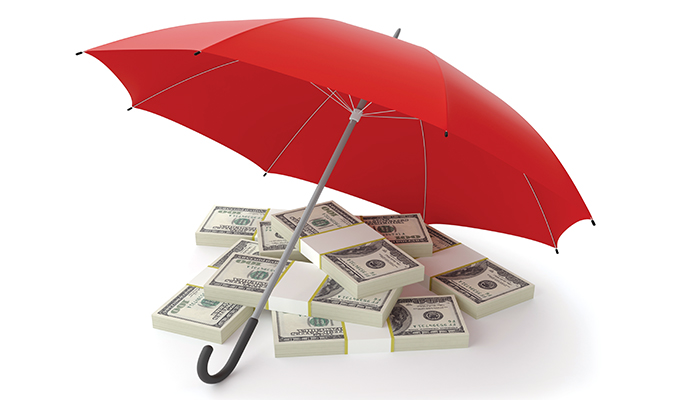All
Utilities Benefit From Major Tax Breaks

Electric utilities benefit from billions of dollars in tax breaks every year, according to a recent report from The Institute for Policy Studies entitled, Utilities Pay Up: How Ending Tax Dodging by America’s Electric Utilities Can Help Fund a Job-Creating, Clean Energy Transition.
“Many utilities firms oppose the Obama administration initiative to cut power plant emissions on the grounds that it would require costly investments in clean energy generation,” the report states. “A cheaper, faster route to achieving the Clean Power Plan goals would be to reduce electricity demand through improved energy efficiency. This report calculates how much additional revenue would be available for investment in energy efficiency if utilities paid their fair share of taxes.”
The report’s key findings are as follows.
- Utilities are even better at tax-dodging than multinationals. The utilities industry pays the lowest effective federal tax rate of any business sector. Of the 40 U.S. publicly held utilities companies that were profitable in 2015, 23 paid no federal income taxes and 16 paid no state taxes.
The most extreme example of utilities tax-dodging in 2015 was Southern Company, a fierce Clean Power Plan opponent, which reaped $210 million in federal and state tax refunds, despite $3.6 billion in pre-tax income.
The industry’s low IRS bills are largely due to depreciation tax breaks. According to Citizens for Tax Justice, the 23 profitable utilities that paid no federal taxes in 2015 reported $11.5 billion in benefits from special tax rules that allow corporations like utilities to write off the cost of their investments far faster than they wear out. - There is tremendous revenue potential from fair taxation of utilities companies. It would be reasonable to expect utilities to pay at least as high a tax rate as retailers, which are similarly tethered to U.S. communities. If the 40 profitable utilities had paid the average rate retailers pay, they would’ve paid more than $11.7 billion in additional federal taxes. At the state level, if these firms had paid the statutory rate, they would’ve paid an estimated additional $2.3 billion—for a total of $14.1 billion in additional federal and state revenue.
- Energy efficiency costs could be covered by fairly taxing utilities. The $14.1 billion in extra revenue that could have been generated through fair taxation is nearly double the amount state governments and utilities spent on energy efficiency in 2015. It would be enough to create more than 88,000 energy efficiency jobs or weatherize homes for up to 3 million low-income families.
The report states that the power sector is responsible for a third of U.S. greenhouse gas emissions, making it the country’s single largest contributor to climate pollution. In 2015, the U.S. Environmental Protection Agency (EPA) released a Clean Power Plan (CPP) aimed at curbing these emissions, with specific state-by-state goals. Power companies and industry associations promptly went on the attack. Opponents filed lawsuits to block the plan and in February 2016 the U.S. Supreme Court issued an injunction halting implementation until a lower court rules on the case.
Utility industry opponents of the CPP say they’re looking out for the public interest. They claim the EPA’s rules will be expensive for ratepayers and detrimental to the overall economy. And yet if these firms were truly interested in what’s best for ratepayers, they would be investing much more in energy efficiency, the cheapest and fastest route to reducing carbon emissions.
Utilities are required by law to invest in “demand-side” energy efficiency at the consumer end, but the patchwork of state and federal programs have not gone nearly far enough to mitigate climate change and move the country towards a clean energy future. Most of these efforts also require home and building owners to invest significant up-front capital, so low-income households often cannot participate. And since such programs potentially reduce utilities’ profits by reducing energy demand, the firms have had little incentive to do more.
At the same time, the utilities sector has been undercutting the potential for strong public investment in job-creating, climate change-reducing efficiency programs. As the Institute for Policy Studies report claims to document, our nation’s utilities companies have become expert tax dodgers at the federal and state levels. Despite strong profit levels and their status as regulated monopolies with fixed rates of return, these firms have used loopholes to contribute next to nothing to public coffers.
Because utilities are regulated, they have the good fortune of having their corporate taxes built into the rates set by regulators. Thus, utilities collect taxes at the full rate from customers, but then are allowed to use loopholes to delay paying those taxes. In effect, this means customers are paying twice—once as ratepayers through the taxes in their monthly utilities bills and a second time as taxpayers when they have to make up for public service funding gaps because utilities are not paying their fair share of taxes.
“While the Clean Power Plan remains tied up in the courts, climate threats compel us to find ways to reduce carbon emissions quickly,” the report states. “One strategy policymakers should consider is denying utilities costly and ineffective tax breaks, with revenue invested in demand-side energy efficiency programs that create good jobs and reduce energy bills for low-income families.”
Utility Tax-Dodging in 2015
Utilities companies have been exceptionally adept at avoiding taxes at both the state and federal levels. In 2015, 40 U.S. publicly held utilities companies were in the black, earning a combined $43.9 billion in pre-tax profits. Of these, 23 paid zero federal taxes on those profits. In fact, 15 of these 23 profitable firms actually received large tax refunds. In other words, they got more out of federal coffers in the form of tax credits and subsidies than they paid in that year. At the state level, 16 of these profitable utilities companies paid no state income taxes in 2015.
Corporations, like individuals, begin their state tax forms with income figures taken from their federal taxes. So, unless state legislators specifically repeal federal tax deductions, credits, and subsidies, these federal supports reduce state taxes that otherwise would be owed as well.
“In today’s era of rampant corporate tax-dodging, few major U.S. corporations pay the full statutory 35 percent rate,” the report states. “Until these problems are fixed, what would be a realistic rate to expect utilities companies to pay? Retail firms, which, like utilities, are tethered to U.S. geographic regions, pay an average rate of 29.6 percent. It seems fair to expect utilities to pay just as much. And yet according to Citizens for Tax Justice (CTJ), electric and gas utilities pay a far lower rate than retailers—in fact they’ve had the lowest effective tax rate of any U.S. business sector.
During the five-year period 2008-2012, CTJ found that utilities paid a tax rate of just 2.9 percent.
The report says that if the 40 profitable utilities companies in 2015 had paid the same 29.6 percent average federal tax rate as retailers, they would’ve paid $11.7 billion more in 2015. At the state level, if these 40 firms had paid taxes at the full established corporate state income tax rates, the states would have had an estimated extra $2.3 billion last year alone to invest in energy efficiency programs.
Why Do Utilities Pay Uncle Sam So Little?
Unlike globe-trotting multinationals, U.S.-based utilities lack the opportunity to lower their tax bills by hiding profits in offshore tax havens. And yet these firms still have no shortage of tax loopholes and subsidies available to them.
“According to Citizens for Tax Justice, the most lucrative loophole for utilities companies is accelerated depreciation, which allows companies to write off the cost of their capital investments, for example on building new power plants or replacing power lines, much faster than these investments wear out,” the report states. “This does not reduce companies’ long-term tax obligations, but rather allows them to perpetually delay their IRS payments, essentially giving them an interest-free loan until the taxes are ultimately paid.”
CTJ analyzed the 23 utilities companies that paid no federal taxes in 2015 and found that they received a combined total of $11.5 billion in tax benefits from depreciation that year alone. For example, the firm with the largest 2015 federal tax refund, Southern Company, had $3.6 billion in U.S. pre-tax income, and yet received a net tax benefit of $177 million. Part of the explanation: Southern’s $1.8 billion in depreciation tax benefits.
The most generous form of accelerated depreciation is so-called “bonus depreciation.” This tax break has generally been available since 2001, allowing firms to write off between 30 percent and 100 percent of the cost of their capital investments in the year of purchase.
The rationale behind accelerated depreciation is that it encourages corporations to buy new equipment, which will boost the economy. But according to the Congressional Research Service, this tax break is a “relatively ineffective tool” for stimulating the economy. These researchers also warn it may actually make companies less efficient by diverting capital away from more productive uses.
And for utility companies, this tax break is even harder to justify, since their investment decisions are driven much more by anticipated demand for power rather than tax incentives.
Related Posts
 From Retailer to Representative: Chris Keyser’s Road to the Vermont State House
From Retailer to Representative: Chris Keyser’s Road to the Vermont State House
Posted on June 16, 2025
 Northeast Working Group for Industry Principles Gets to Work
Northeast Working Group for Industry Principles Gets to Work
Posted on May 8, 2025
 Trump Policies and Energy Markets
Trump Policies and Energy Markets
Posted on April 28, 2025
 NEFI Introduces the National Home Comfort PAC
NEFI Introduces the National Home Comfort PAC
Posted on April 28, 2025
Enter your email to receive important news and article updates.
